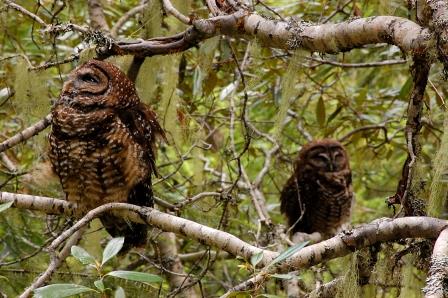
Twenty years ago, the Northwest Forest Plan sought to resolve the timber wars. Has it worked? We think so.
It's important to recall that gridlock plagued the Northwest during the late 1980s and early 1990s. The old-growth forest that once covered much of the region had been decimated by clearcutting and other logging, threatening the spotted owl and other wildlife. While many stakeholders demanded protections for the remaining forests, the shutdown of logging on federal lands left others facing an uncertain future. Out of this tense situation came the Northwest Forest Plan.
Hundreds of local, grassroots stakeholders were actively involved in the creation of the plan, and hundreds of thousands of people across the country submitted comments to help refine it.
The Northwest Forest Plan had no precedent and continues to be a unique landscape scale management plan. The plan dramatically reduced logging to save wildlife and fish habitat, placing the burden for spotted owl protection on federal lands (thus “freeing” private timber lands for continued harvest), and imposed cautionary requirements for numerous other species; all to be accomplished with layers of required cooperation among affected parties.
Over the next few years a radically different vision for our national forests was implemented, most notably in the Siuslaw National Forest. The timber industry began restoration forestry. Citizens throughout the Coast Range joined hands with the Forest Service as partners to craft a better future for their public lands. In giving the land a needed respite from decades of unsustainable logging, nature has been busily healing itself.
In the 20 years since its inception, the Northwest Forest Plan has protected hundreds of wildlife species, conserved and restored riparian areas, protected water resources, and kept some of our country’s largest remaining old-growth forests intact.
While not perfect, the Northwest Forest Plan has provided a durable vision and guide for forest management. The benefits have stretched beyond the initial aims of protecting wildlife and preserving clean water. We know now that the forests, particularly those in the Northwest, play an essential role in capturing and storing climate-disrupting carbon pollution. The ripple effect from healthy forests spreads beyond the communities and forests located within the scope of the plan.
As we mark the 20th anniversary of this landmark management guidance, we should look for ways to strengthen and replicate it elsewhere, not undermine it. Nature has tremendous, but not limitless, restorative powers. It's vital that we continue the focused, collaborative work started two decades ago to ensure management of our national forests provides a vision for a better tomorrow, not a flashback to the unsustainable and conflict-riddled past.
We'd do well to consider where we'd be today without the Northwest Forest Plan.
Jim Furnish is a former deputy chief of the National Forest Service and served as Siuslaw National Forest supervisor during the creation and implementation of the Northwest Forest Plan. Dan Chu is the senior director for Sierra Club's Our Wild America Campaign.
 '
'
